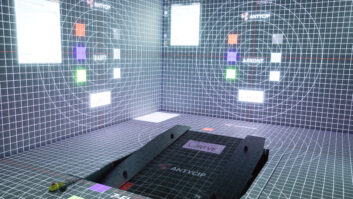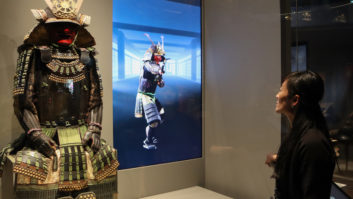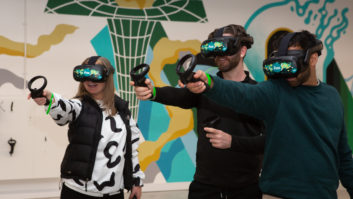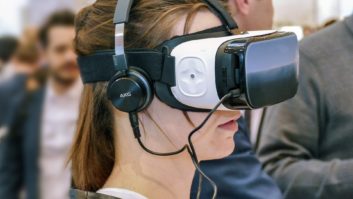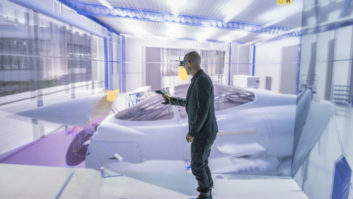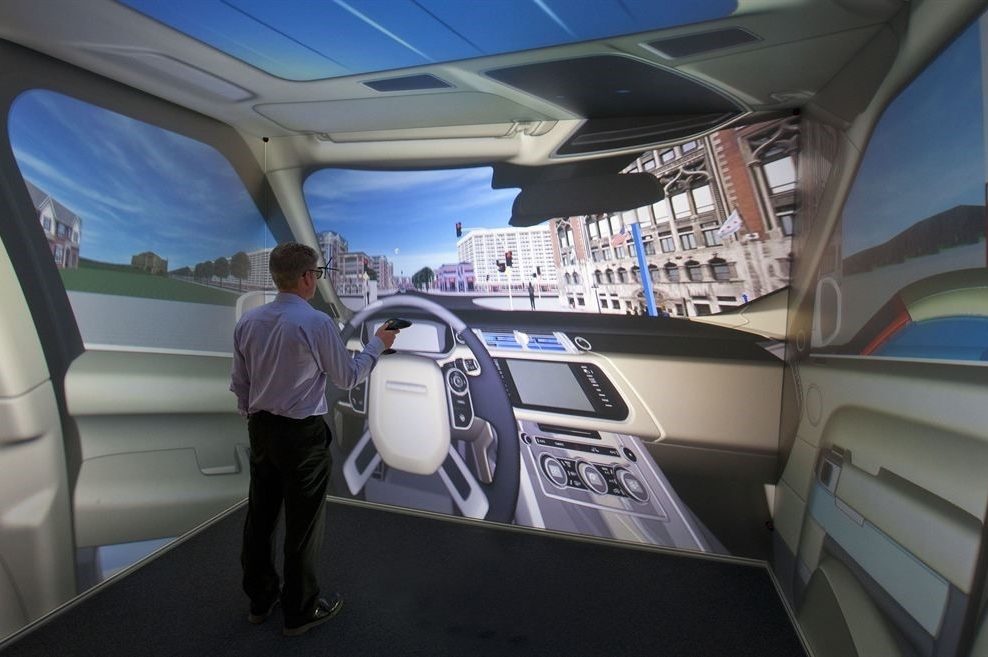
Having previously looked at the shared experiences VR/AR/MR technologies can deliver and the markets with the most potential, Ian McMurray concludes by considering things from the integrator’s perspective.
As things stand today, integrators seem to be somewhat bemused. The technologies are potentially compelling – but what are the real-world applications from which they can derive profit? According to those operating in the VR/AR/MR market, the right thing to do is to keep an open mind.
“First,” says Colin Yellowley, founder and president, Igloo Vision, “integrators need to avoid the temptation of associating VR/AR/MR solely with headsets. Sure, headsets will always be a part of it, but there are many other ways to immerse your audience in VR content. The aim for integrators should be to envisage and create an environment that’s akin to a giant headset, so that entire groups of people can step inside, and everyone can experience the same thing at the same time.”
“Second,” he continues, “there’s a level of misunderstanding and misinformation out there. I recently saw a Reddit discussion thread involving supposedly well-informed people discussing immersive AV environments, and the lack of practical understanding was a real shock. If anyone acted on the advice being shared, they’d have been very disappointed and could have wasted a lot of money. My advice to integrators would be to talk directly to experienced practitioners, and avoid the online forums. Otherwise it’s a case of, at best, the partially sighted leading the blind.”
It is definitely not the modern equivalent of Betamax
Steve Blyth, Engage Works
Keeping on track
Anne Lindgren, sales director at Seloy Live, picks up on the subject of knowledge.
“It’s vital for integrators to be constantly aware of what’s going on in the industry in general and how it’s developing,” she believes. “Keeping on track with which technologies are evolving and which aren’t, which solutions are safe to add to their portfolio so that they support their total offering. Being well trained by the manufacturers is crucial; the more they know, the better they serve the customer. It’s also about being able to make the right choices between the old and safe and the new and exciting.”
“There has to be a want to take this further,” asserts Steve Blyth, founder and managing director of interconnected experiences company Engage Works. “AV companies that are too arm’s length and traditional will be overtaken by more forward-thinking and pioneering adopters, designers and integrators.”
“Don’t fear it – embrace it,” he laughs. “It is definitely not the modern equivalent of Betamax.”
It’s all too easy to conflate and confuse virtual reality and augmented reality. While both create a higher degree of immersion, one creates an unreal world: the other reflects the real world, but enhances our understanding, or enjoyment, of it. There is also an extent to which augmented reality is really nothing new: overlay any real world image with text or graphics that help increase the usefulness of that image – such as in a control room – and there is an extent to which you have augmented reality.
Killer apps
The hardware required for VR/AR to become a reality (sic) pretty much exists, although it is improving – and falling in price – all the time. What are needed are the kind of commercial/industrial ‘killer apps’ that Pokémon Go unquestionably was in the consumer space. Inevitably, this leads to something of a ‘chicken or egg’ conundrum: will VR/AR/MR solutions be developed speculatively and find a receptive audience in business – or will development be driven by identified need? Did the Sony Walkman respond to consumers’ desire to take their music with them anywhere – or did it create that desire?
Such is the investment in VR/AR technology, and its potential for transforming the way in which we interact with the world and with each other, it would be a brave person who would conclude that it has no future in the pro-AV market.
Today, those working in the space are evangelical about the opportunity: integrators and manufacturers, however, remain to be convinced – perhaps based on a possibly erroneous assumption that ‘VR equals headsets’. There is certainly a belief that a future for VR may eliminate the requirement. After all: Star Trek’s Holodeck didn’t need cumbersome headgear, did it?
It seems likely that VR will find – is, in fact, already finding – niches in visitor attractions, training, simulation and design. For it to extend more widely into pro AV’s bigger markets will take some imagination – but that’s long been a strong suit for our industry.
Good chance
The fate of MR, given that its premise sees meaningful interaction between the physical world and the virtual world, seems coupled to that of VR. AR, on the other hand, appears to stand a good chance of becoming significant in those larger markets such as education, collaboration, control rooms and digital signage. It looks likely to develop in two directions – with and without special headgear – and both show promise for a broad range of applications. Blyth, for example, believes that in the future, car manufacturers will no longer provide manuals: you’ll just point your phone at a knob or dial, and AR will overlay the image with information about it.
The trick appears to be not to dismiss VR/AR/MR as gimmicks or as passing fads, but to remain open-minded – and to stay informed. Gareth Lloyd’s position seems entirely appropriate.
“VR/AR/MR are not markets that we are particularly active in,” notes Lloyd, group communications manager at integrator Saville. “At present, the technologies seem to be focused on engineering, medical and education. But: it’s a fabulously interesting area, especially for the collaboration area, and one that we are keen to embrace going forward.”
MD of Sarner – Ross Magri’s words may turn out to be prescient.
“Long term,” he smiles, “once VR, AR and MR have sufficiently matured, we will wonder how we lived without such technologies.”
There may be lingering questions about how the role of these technologies will play out in business – but AR’s future in the consumer space seems assured. Niantic Labs’ follow-up to Pokémon Go will be called Harry Potter: Wizards Unite, and is expected to launch some time this year. Let’s see if this one flies.
www.engageworks.com
www.holovis.com
www.igloovision.com
www.sarner.com
www.seloylive.com
